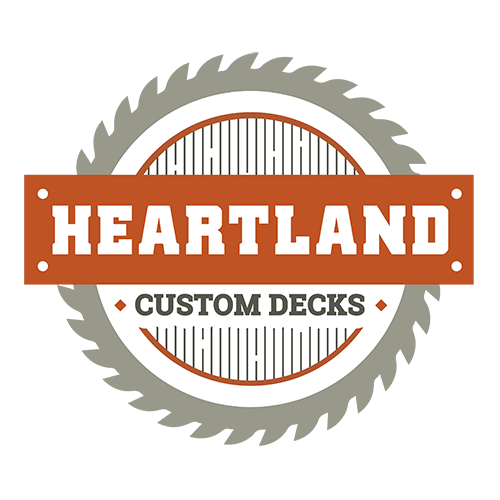Composite Decking Kansas City: Is It Worth the Investment?

When we discuss composite decking with homeowners in the Kansas City area, most want to know how it performs, what it costs, and whether it’s worth the investment.
We’ve installed decks across the region and have seen firsthand how composite holds up against our weather. In this guide, we’ll explain what makes composite decking a strong choice for Kansas City homes, how it compares to wood, and what to expect in terms of maintenance and long-term value.
What is Composite Decking?
Composite decking is made from a blend of recycled wood fibers and plastic. The result is a low-maintenance material that mimics the look of natural wood without most of the drawbacks. Boards are typically capped with a durable polymer shell to protect against moisture, fading, and mold.
There are several brands on the market, including Trex, TimberTech, and Fiberon, each with different price points and color options. The key advantage is that composite decking doesn’t need to be stained or sealed, and it won’t crack, splinter, or warp the way untreated wood can over time.
How Composite Decking Performs in Kansas City Weather
Year-Round Durability Matters
Kansas City sees everything from blazing summers to snow-packed winters. Temperature swings, humidity, and ice can wear down wood over time, especially if it’s not regularly maintained. Composite materials handle these conditions far better.
We’ve found that composite boards resist expansion and contraction during freeze-thaw cycles better than most pressure-treated lumber. The plastic content helps shed water, and the cap layer protects against UV damage. This makes composite a practical long-term solution for decks that are exposed to the elements all year.
Upfront Costs vs. Long-Term Value
What You’ll Pay and What You’ll Save
There’s no denying it, composite decking costs more than traditional wood on the front end. Homeowners can expect to pay about 30% to 50% more for materials, depending on the brand and board type. Installation labor is generally similar.
But the long-term numbers tell a different story. Composite requires far less maintenance. You won’t need to re-stain every few years, replace cracked boards, or deal with rot or insect damage. Over a 10- to 20-year period, many of our clients end up spending less overall by going with a composite from the start.
Maintenance Costs Over Time:
| Material | Initial Cost | Annual Maintenance | 10-Year Total |
| Pressure-treated wood | Lower | Moderate to High | Higher |
| Composite | Higher | Very Low | Competitive or Lower |
Composite Decking Kansas City: Pros and Cons to Consider
The Upside
- Low maintenance: No staining, sanding, or sealing needed
- Consistent appearance: Color and texture hold up for years
- Durability: Resists warping, splintering, and moisture damage
- Eco-friendly options: Many brands use recycled content
Things to Watch
- Heat retention: Darker composite boards can get warm in full sun
- Upfront cost: More expensive than wood initially
- Scratching: Though rare, sharp objects or heavy furniture can mark the surface
We always walk our clients through these trade-offs based on their home’s location, sun exposure, and how they plan to use the space.
When is Composite Worth It?
Composite is a smart investment if you’re planning to stay in your home for several years and want a deck that looks good with minimal upkeep. It’s also ideal for homeowners who want a clean, modern look or have had issues with rot or insects in past deck projects.
If you’re thinking about selling your home soon, composite decking can still make sense. A high-quality deck adds curb appeal and increases perceived value, especially when buyers see a low-maintenance outdoor space.
Choosing the Right Installer for Composite Decking in Kansas City
Experience matters when it comes to proper installation. Boards need to be installed with hidden fasteners, correct spacing, and the right support structure to avoid movement or buckling. At Heartland Decks, we specialize in composite systems and follow manufacturer guidelines to ensure long-lasting performance.
When you’re reviewing contractors, ask about:
- Their experience with your preferred composite brand
- How they handle expansion gaps and water drainage
- What type of fasteners and framing they use
- Warranty coverage for both labor and materials
We offer free consultations to walk you through the options and help you choose the right material, style, and design to match your budget and your home.
Final Thoughts
Composite decking isn’t the cheapest option upfront, but it’s one of the smartest investments you can make for your outdoor living space. It saves time, money, and hassle in the long run, especially in a climate like ours where wood decks wear down fast without constant upkeep.
If you’re ready to build something that lasts, Heartland Decks is here to help. Contact us today to schedule a free estimate, and let’s talk about building the right deck for your home.
Heartland Decks:
Husband Tested &
Wife Approved!
It's Time To Build Your Dream Deck & Give
Your Home the Backyard it Deserves
HEARTLAND DECKS
Office & Showroom
Administrative: By Appt. Only
contractor marketing & lead generation by: kcwebdesigner.com | kcseopro.com

